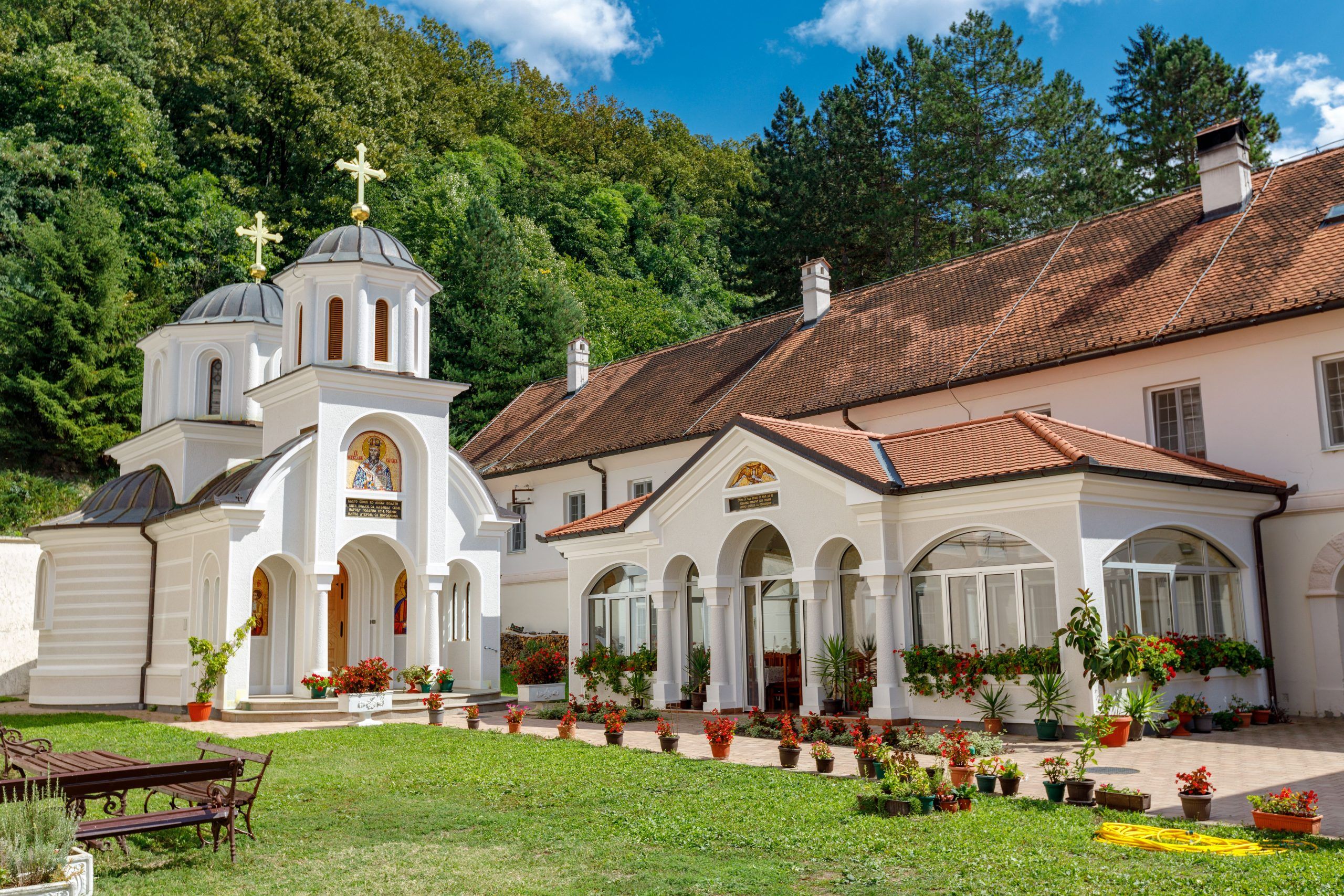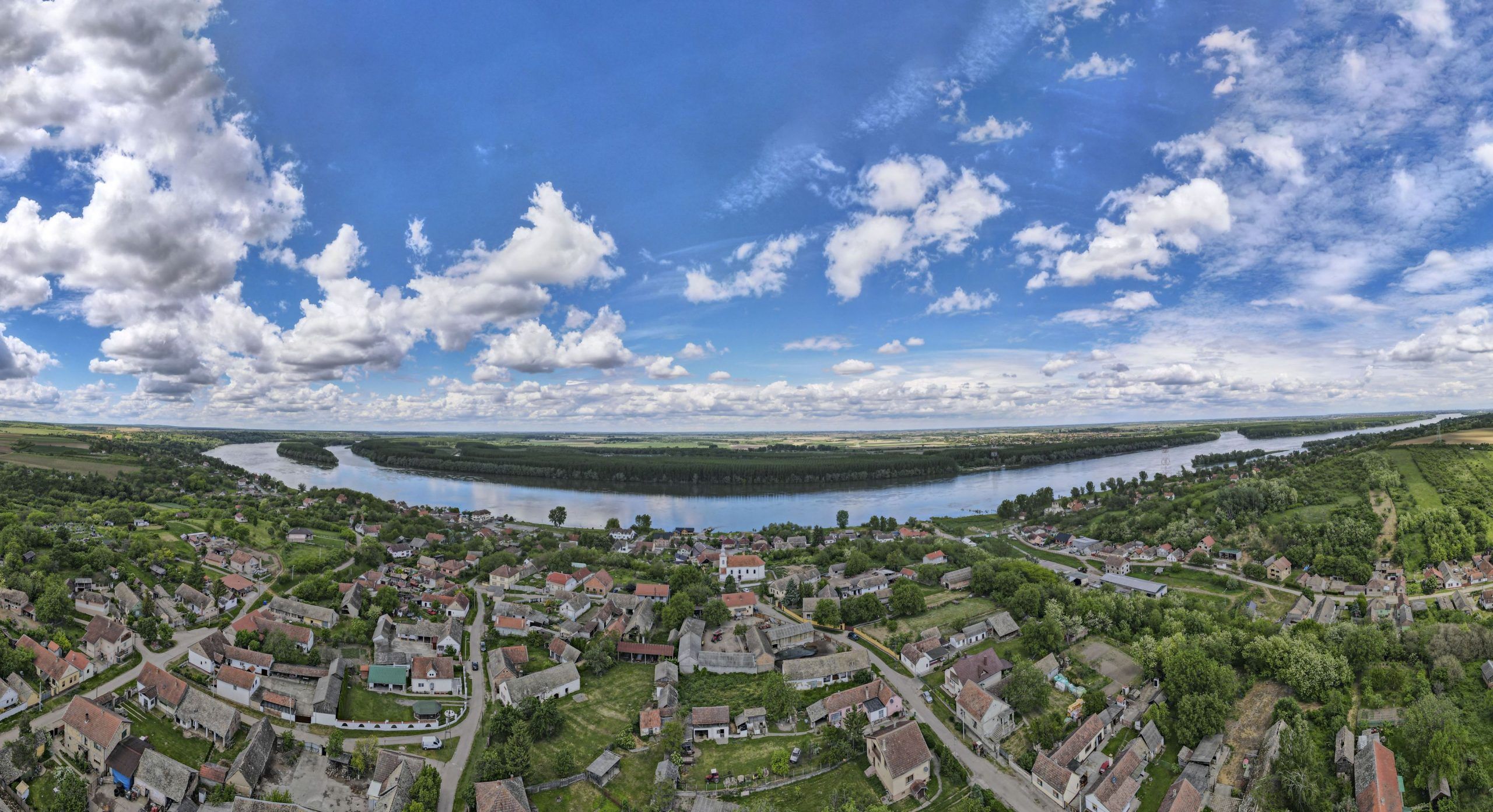Beočin – Čerević – Banoštor
The southern rim of the Novi Sad tourist area consists of the northern branches of Fruška Gora area, which gently descend towards the Danube. History has recorded that many peoples changed and lived together in this area, creating a heritage of great cultural value. One of the achievements of civilization that belongs to many peoples who lived at Fruška Gora is viticulture. Wine has been mass-produced and celebrated here for more than two millennia. Today, almost every corner of Fruška Gora has areas under vineyards, and the wines that are made here exude the power of the climate. The modern assortment [1] for the production of white Fruška Gora wines consists of: Italian Riesling, Chardonnay, Župljanka, Sauvignon, Traminac, Neoplanta, Sila, Rhine Riesling, etc., and for red wines: Merlot, Probus, Frankovka, Portuguiser, Cabernet Sauvignon, Cabernet Franc, Pinot Noir, etc.
The wine trail that follows the course of the Danube on the Srem side along the Novi Sad-Beočin-Čerević-Banoštor stretch is extremely rich in motifs. There are also about twenty wineries and wine cellars, including: Vinarija Prekogačić (Prekogačić Winery), Vinarija Belo Brdo (Belo Brdo Winery), Vinski podrum Žabić (Žabić Wine Cellar), Vinarija Verkat (Verkat Winery), Podrum Ačanski (Ačanski Wine Cellar), Fruškogorski vinogradi (Fruška Gora Vineyards), Vinarija Šijački (Šijački Winery), Vinarija Vinarium (Vinarium Winery), Akademia Modele, Podrum Stojković (Stojković Wine Cellar), Vinarija Vinogradi Urošević (Urošević Vineyards Winery), etc..
While touring this treasure, which may last for several days, in addition to Novi Sad you can also choose Vrdnik as a starting or ending position, because you will combine wine and thermal pleasures. But, it can also be the Eco-Ethno Club in Čerević, Hotel CEPTOR – Andrevlje, Restaurant with accommodation Atos – Koruška or some other accommodation in the area. Vrdnik qualifies for this important position because of the fact that it is a well-known spa place in the centre of the Fruška Gora National Park, an ideal place for a longer vacation and a starting point for wine centres and many attractions of Fruška Gora.
Outdoor and indoor swimming pools of Banja Vrdnik, due to the healing properties of thermo-mineral water, are well-known places for recreation, rest and treatment. They offer hotel facilities, luxury complex Fruške Terme with swimming pools, spa and wellness centre. The offer of private accommodation in the entire area is diverse, and visitors have access to health trails for a longer or shorter walk to the famous places of Fruška Gora and picnic sites.
Beočin
The winemakers of the Beočin region inherit a long tradition of good Fruška Gora winemakers and wine cellar keepers, especially the one created and developed on the monastery estates, where a large tax was paid during the Ottoman rule on wine and every basket of harvested grapes due to the abundant and quality fruit. The word about the quality of Fruška Gora wines contributed to the fact that in the 16th century it was exported to the Czech Republic and Poland.
After the temptation brought by phylloxera at the end of the 19th century, the vineyards were slowly renewed, but on a new substrate with the use of new types of grapevine. In the last decades, the wines of numerous Fruška Gora wineries have become more and more regularly the choice of wine lovers, and wine trips to Fruška Gora are experiences that will be remembered for a long time.
Beočin is a Danube settlement, nowadays a municipal centre in the vicinity of which, in the valley of Kozarski potok, the Fruška Gora village of Beočin was originally built. When deposits of quality marl were discovered in its vicinity, a cement factory was built, and with it a factory settlement, so that the entire settlement got a dual shape. The old settlement, near the monastery, was named Beočin Selo, and the new one Fabrika, only to be renamed due to the increase of the population to Beočin Grad. Currently it is a unique settlement called Beočin.
You should not miss to visit Prekogačić Winery and the Serbian Orthodox Monastery Beočin. As with other monasteries at Fruška Gora, history and tradition are mixed in one exciting story in this case as well. However, the first written information about the Beočin monastery is from the 16th century.
Hiking enthusiasts can choose one of the trails of the Fruška Gora Marathon Beočin – Brankovac (3km) or the Beočin Monastery – Crveni Čot (3.7km). There is a ferry between Beočin and Futog that transports pedestrians, cyclists and cars across the Danube. On the Beočin side, the ferry docks at the Karaš Restaurant.
Beočin monastery https://www.eparhija-sremska.rs/manastiri/beocin/
Karaš Restaurant, Naselje Dunav bb www.restorankarasbeocin.rs
Čerević
Čerević winemakers and wineries are one of the Fruška Gora pearls. The settlement is not large, so you can decide to try a good part of the wine offer, and then experience the stay in an ethno household in the place or the one provided by the hotel on the picnic area – Andrevlje.
Čerević is an old settlement built at the place where Čerevićki potok (Čerević Stream) flows into the Danube. During the archaeological research, the remains of a Roman cemetery and bricks with the symbol of the 6th Roman Legion were found there. Today, a tombstone from that period, which is located in the wall of the local Catholic Church, reminds us of that. History later records that the settlement was destroyed by the Ottomans, and that during the rule of Austria, the village of Čerević was known for viticulture.
Don’t miss to visit Belo Brdo Winery , Žabić Wine Cellar, Verkat Winery and two striking churches, St. Joseph’s and St. Sava’s, both from the 18th century. There is also the Homeland Museum of Čerević, which preserves the legacies of the painter Milenko Šerban, the sculptor Jovan Soldatović and the legacy of the poet Jovan Grčić Milenko. For nature lovers, it will be interesting to walk to the Testera picnic site that is 4 km away or the Andrevlje picnic site that is 5 km away where the hotel-congress centre CEPTOR is located. Marked hiking trails are Testera – Crveni Čot (6 km) and Andrevlje Health Trail (12 km).
Eco-Ethno Club Čerević, Heroja Raše Street 42
Hotel-Congress Centre CEPTOR, Potes Andrevlje, Čerević
Homeland Museum of Čerević, Jovana Grčića Milenka Street 4
Banoštor
Banoštor cannot disappoint you. It is the settlement of winemakers, wine cellars and good stories you can hear during the wine tasting and buying. You cannot neglect the data that there are more daughters from winemakers’ families in Banoštor who manage the family wineries, as well as women who participate in affirmation of Banoštor wines as enologists and grapevine growers. Around ten wineries contribute to the ascend of Banoštor wines on the wine map of Serbia, many of them being the family undertakings. There is the abundance of wine, as evidenced by thousands of litres per capita a year. If you come during the Banoštor Days of Grape (the end of August – beginning of September) you can learn about wines from many Banoštor wineries gathered at one place and thus avoid the problem of deciding which winery to visit first.
During the rule of the Romans there was the fortress at the place of today’s Banoštor which was known as Malata, and later Bononija. The traces of that fortress still exist in the vicinity of the Orthodox Church. The important pier on the Danube also existed during the Roman rule. That was where the emperors Julius and Gracianus disembarked their ships on their way to Sirmium, one of the capitals of the Roman Empire from that time. During the rule of the Turks, Banoštor lost its significance as the defence fortification.
The ferry crossing towards Begeč is still located here so that many visitors can use that option to visit Čarda kod Braše (“Čarda” Tavern at Braša’s) or the one at Begečka Jama (“Čarda” Tavern at Begečka Jama), or, upon prior announcement, organize lunch at Cvejin Salaš (Cveja’s “Salaš” Farmstead). Many will also visit Majkina Radionica (Grandma’s Workshops) where you can buy souvenirs and traditional embroidery. However, such an old settlement as Banoštor cannot be understood without materialized evidence on continuity of living, which include the Church of St. George built in the period of Great Migration of the Serbs under Arsenije Čarnojević and ruins of the Church of St. Rudolph from 1913. Banoštor attraction also include the following wineries: Ačanski Wine Cellar, Fruškogorski vinogradi Winery, Akademia Modele Ltd, Vinogradi Urošević Winery, Stojković Wine Cellar, Vinarium Winery Šijački Winery, etc.
Čarda kod Braše (“Čarda” Tavern at Braša’s)
Čarda na Begečkoj jami (“Čarda” Tavern at Begečka Jama)
Cvejin salaš (Cveja’s “Salaš” Farmstead)
Majkina radionica (Grandma’s Workshop)
Text: Gordana Stojaković
Photographs: Aleksandar Milutinović
Tourism Organisation of the City of Novi Sad is not responsible for changes in information and services.
The text posted in: June 2021
[1] The grape assortment as well as the transcription of the grape varieties given according to: Cindrić, Petar and Vladimir Kovač (2007) “Vinogradarstvo i vina“ (“Viticulture and Wines“) Fruška Gora. Ed. Nebojša Jovanović and Jelica Nedić. Pg. 498. Beograd: Zavod za udžbenike.




